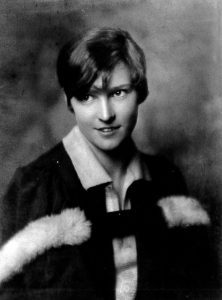
The public-speaking appearance was half done. At intermission, last Friday night in the central-Alberta city of Camrose, I sat at a table signing books and listening to feedback from members of the audience.
A woman approached; with her British accent she offered her take on the subject of my evening talk, the Battle of Britain. She was a child in London during the Blitz in the summer of 1940, when she said her father had served in the London fire brigade fighting fires German bombers ignited each night.
“When he came home in the morning after fighting fires all night, I remember his face was completely black with soot,” she said, then drawing imaginary circles around her eyes, “except the white around his eyes where he’d warn protective goggles.”
Images of those horrid days of destruction, wrought on Londoners during the Second World War (some of which I described last week), have haunted historians for several generations. But somehow this woman’s graphic depiction – the white around her father’s eyes – bothered me. They were indelible.
But what really irked me was that I’d learned this story after the publication of my book.

It seems historians never quite get it all. In fact, it happened another time last week. Presenting the same talk to an audience at the Arden Theatre in St. Albert (just north of Edmonton) last Thursday, in the first half of the program, I recounted the life of Elsie MacGill. Born in Vancouver and home schooled, she attended UBC at 16 and next graduated from U of T at 18.
Then, in a master’s program at the University of Michigan in 1929, MacGill contracted polio, but still managed to complete her MA and became the first North American woman to earn an aeronautical engineering degree. So remarkable was her rise in aircraft design, production and performance that she was hired by a foundry in Fort William, Ont., in 1938 to lead the assembly of Hawker Hurricanes for the Royal Air Force.

The RAF was so desperate for fighter aircraft, and she was so expert at it, that she delivered 40 Hurricanes to the British just three weeks before the pivotal Battle of Britain began on July 10, 1940.
“But she led a largely female assembly-line crew,” this woman told me at the intermission. As she pulled pages from a file folder under her arm, Carol DiGiuseppe’s glasses slipped right to the tip of her nose.
“How do you know?” I asked.
“My 97-year-old friend Pat worked on the Fort William factory floor alongside Elsie MacGill,” she said. “So, I just wanted you to know.”
As if two stories I’d missed in my research for writing books weren’t enough, on Saturday I flew back home from Alberta and Sunday morning I drove to a Remembrance event in Shedden (a half hour southwest of London, Ont.)
There, a veteran in a beret and medals came up to me after the same presentation. Ken Kennedy, who’d enjoyed a long career in the RCAF, wanted me to know about his father, Wing Commander Andrew Kennedy, who devoted a lifetime of service to Air Force too.
“But here’s a wartime story you probably won’t know,” Ken Kennedy said.
Once again, I thought, “What have I missed this time?”
“While Dad was training in the Royal Air Force in the 1930s,” he continued, “he played for the Grosvenor House Canadians, who were English (Ice) Hockey Champions.”
When I later checked a website on International Hockey, I discovered that Andrew Kennedy had played for in an elite-level league in Britain. And in 1934, they’d played several exhibition games in Prague, Czechoslovakia.

The Grosvenor House Canadians lost to the Czechs, but beat Team USA. Coincidentally, Ken Kennedy told me, figure-skating sensation Sonja Henie attended the tournament and was featured on the same ice surface. But that’s not all.
“Henie was such a sensation,” he said, “that many other celebrities were drawn to the Prague arena to see her, including the then Chancellor of the German parliament, Adolf Hitler.”
Kennedy went on to explain that his father saw Hitler spectating with his henchmen in the stands and then again off the ice waiting to meet Henie. But he said his father had the last laugh. “While Hitler waited in the hallway, Henie visited the Canadians in their dressing room.”
W/C Andrew Kennedy’s brief encounter with Sonja Henie is yet another story that I haven’t been able to include in any of my military publications. But the fact that the Canadians snubbed Adolf Hitler – almost before anybody else on the Allied side – isn’t such bad compensation.